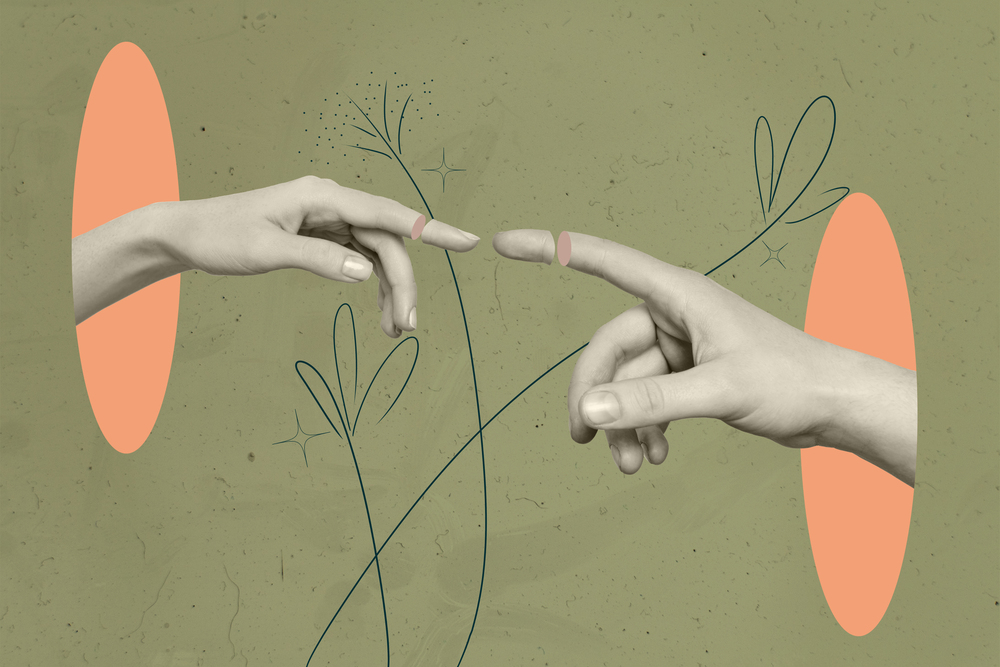A new article in Psychosis argues for a radical shift in the way mental health care responds to psychosis. Rather than isolating and pathologizing those in altered mental states, Elan Cohen calls for a clinic of solidarity—one that recognizes and engages with psychosis as a meaningful, relational phenomenon. He critiques the dominant psychiatric model, which prioritizes control and containment over connection, and urges clinicians to shift toward an approach grounded in mutual recognition and human rights.
“Because there is no ‘I’ without a ‘you,’ we all depend on the presence of a trustworthy other and the potential for mutual recognition,” Cohen writes.
“The word ‘solidarity’ originates in the Roman legal concept of an obligation in solidum; a joint contractual obligation in which each signatory is declared liable for the debts of all together. In other words, an injury to one is an injury to all. Psychoanalysis accepts that loss, misrecognition, and trauma may be inevitable parts of living, formative in our subjection to the discursive limits of culture and society.”
Cohen proposes in his article the establishment of a solidarity-based clinical practice that recognizes differences as an inherent part of our humanity, where we do not shy away from interpersonal conflicts, and where we resist the urge to rationalize “reality.” This stands in contrast to the current approach of isolating, objectifying, and containing individuals experiencing altered mental states (psychosis). He then emphasizes how much attention is given to altered mental states, yet without genuinely seeking to understand them. In his text, he highlights the efforts of those who, despite resistance within the field, have treated individuals experiencing altered mental states as people who belong in our society.
In his writing, Cohen discusses how, in the United States (including Puerto Rico), providers are trained to refer individuals to a higher level of care, medicate them with powerful and numerous antipsychotics, and contain them at the first signs of a “breakdown.” He further illustrates how this approach historically turns into a cycle of hospitalizations, homelessness, prisons, shelters, etc. These institutions end up amplifying the anxieties and defenses of individuals experiencing these states, rather than providing healing and recovery. A psychoanalytic approach, however, opens space for memory, repetition, and processing experiences.
Cohen argues that madness is fundamental to human consciousness, intertwining with dreams and everything that remains unconscious to us. Drawing on various theories and studies, he contends that psychosis and madness are ways in which our bodies attempt to heal and reconstruct meaning after ruptures in our relational lives. Thus, psychosis, according to Cohen and others, is a response to a social crisis in our lives.
















Wonderful stuff..lets make it happen.
Report comment
Thank You Dr. López-Aybar.
Report comment
“. . . research has shown that medication-free care for individuals experiencing altered states is also possible and leads to greater autonomy . . .”
I’m also thankful for posts like these.
Directly related to this, I learned something today after reading what Andrew Seefeldt shared in his “Personal Stories” offering on Mad in America about the forced misuse/overuse of antipsychotics and their side effects, including akathisia. This was a term I wasn’t familiar with.
In hindsight, I think the Seroquel my elderly mother was prescribed was the likely cause of her restlessness and agitation and probably contributed to her confusion. One of the board and care’s caregivers told me the owner had instructed staff to give my mother an extra dose whenever she became restless or as a prophylactic.
I told them not to, but they continued until I went to the State.
I’ve realized a lot of things. There are all sorts of traumas. Poor hygiene, UTIs, malnutrition, physical and emotional abuse, abandonment or neglect, loneliness, grief, feelings of dehumanization . . . can all cause isolated episodes of psychosis and/or deliriums, which can be treated as anomolies that need to medicated or be misdiagnosed as something they’re not, particularly in vulnerable populations.
Research has also shown that there are elderly people whose brains show clear signs of Alzheimer’s during autopsies, but who remained, according to Wikipedia “cognitively intact” up until their deaths, meaning there weren’t signs of cognitive decline or dementia while they were alive. I remember reading about this during the 90’s, before I was on the internet. The study was called the “Nun Study of Aging and Alzheimer’s Disease”.
My mother and I were in a no-win situation. With not enough resources to have cared for her at home and no good options.
Report comment
Yes. I remember reading that and yes seeing that in family members. I am so sorry for you and your mother. I saw the supports actively slip away from the community. One was a Chronic Illness Center that paired up a social worker and nurse and the patient was an active part of the team. It was closed.
It’s been a mess was a mess and it seems to have gotten worse though again I see small sprouts of possible life though not in a way I would prefer – lots of missing pieces and no good institutional memory or historical memory. Thanks for bring up the nun study.
Report comment
Thanks, Mary. I’ve done a lot of grieving over the years and told my mother how sorry I was for all that she went through. This last piece of information triggered another wave lasting several hours.
I was fortunate to have worked with a couple of non-profits during the time my mother was alive, including one with a social worker and nurse, with the latter being someone we also paid privately to visit my mother.
They were doing the best they could working within a system with limited options. When I decided to move my mother to a private board and care I could walk to rather than the geographically distant, large nursing home her insurance would’ve partially covered (no one covers everything), the nurse cautioned me not to. But how could I not?
The director of our local ombudsman in the area we lived in and where the board and care was located even offered me a paying job. That’s how much time I spent trying to protect my mother and other residents.
Sometimes the best we can do isn’t enough. The same will probably happen to me and my husband and a lot of other people. I’m not feeling sorry for myself, we’re far luckier than most. Part of life is making peace with all of the things beyond our control.
In a perfect world, we’d die in our sleep holding one another, like the Valdaro Lovers from 6,000 years ago.
Report comment
No good options . . . not enough money, not enough family willing or able to get involved and not enough information to make better choices when I had a choice. And seemingly no one at any point along the way with a fully informed and aware holistic perspective to offer.
Sometimes there aren’t good options.
As I was composing this, I received a phone call about an elderly relative who’s actively dying, asking for my support. Something I’d offered and been hoping they’d accept for a while now.
Report comment